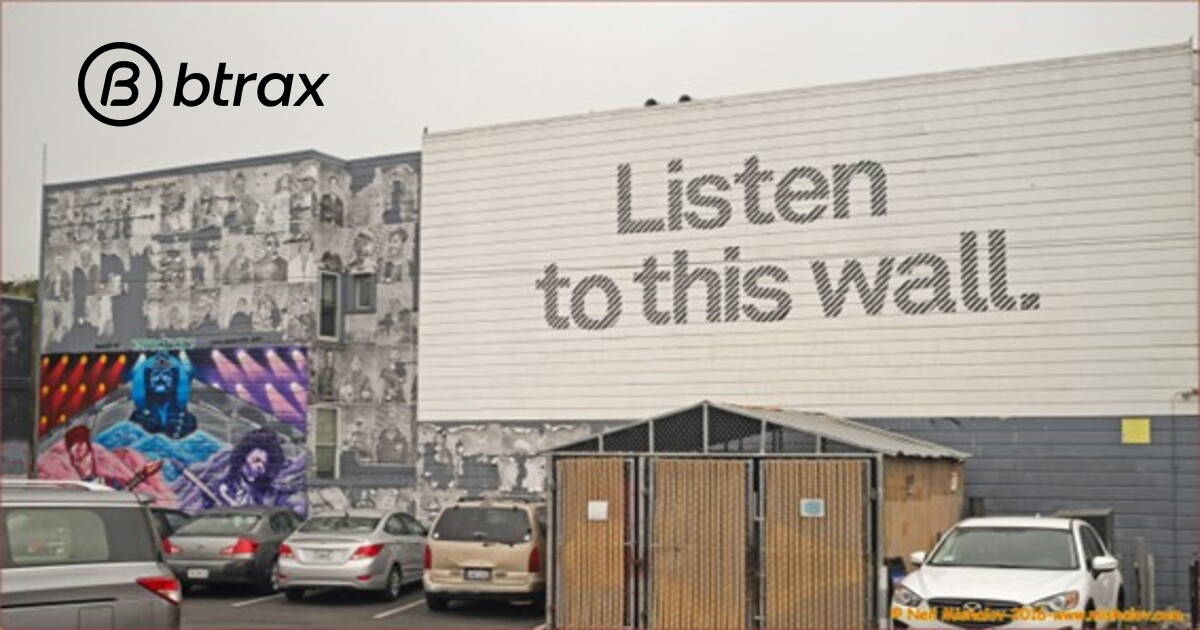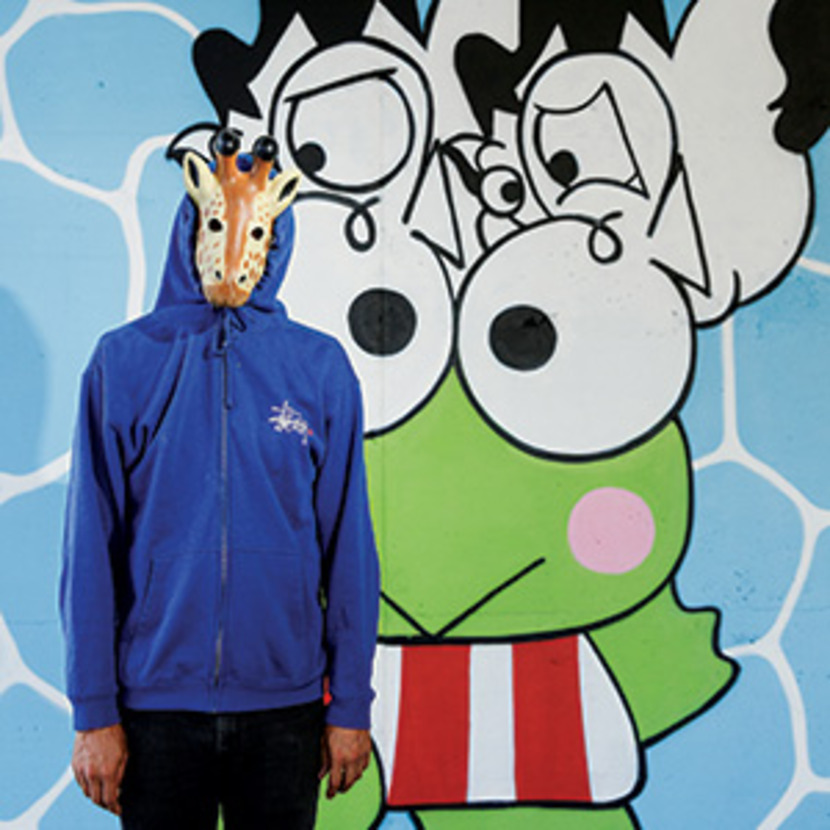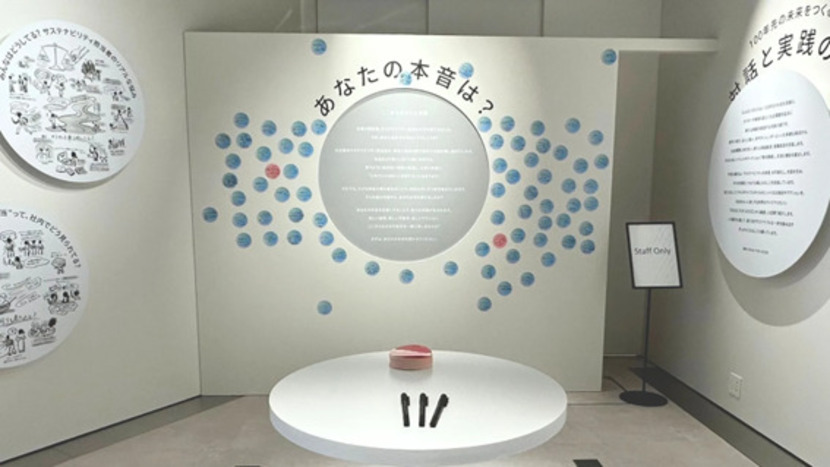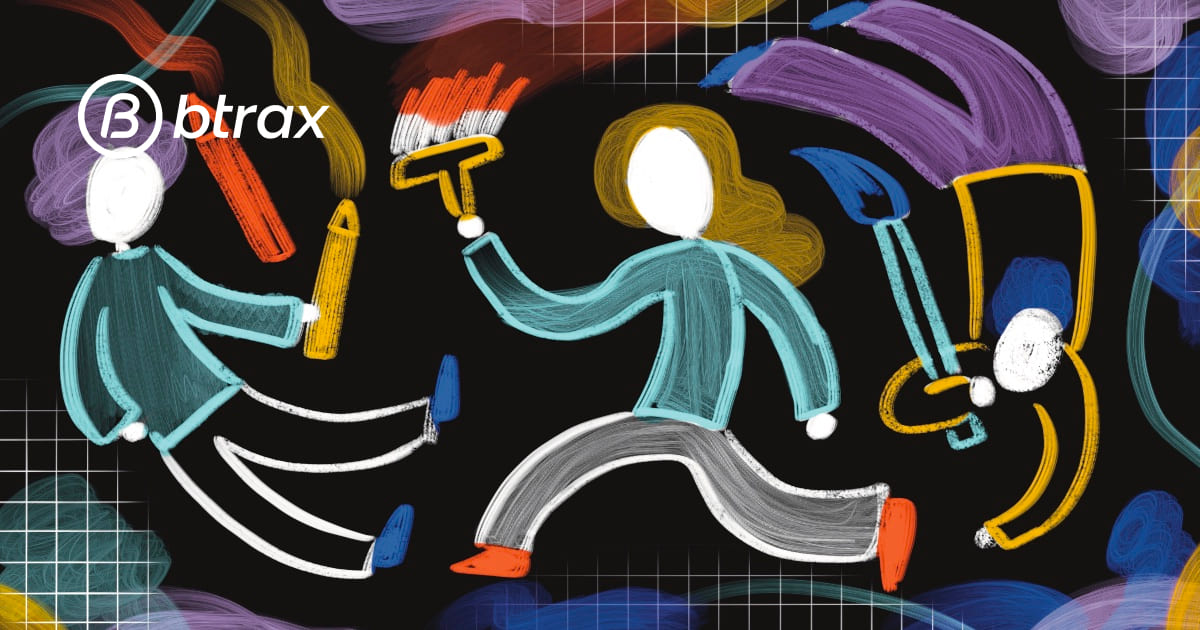
Btrax Design Company > Freshtrax > San Francisco&#...
San Francisco’s Street Art: Voices Behind the Walls
Living and studying in San Francisco has opened my eyes to a form of design that feels completely different from what I was used to growing up in Tokyo. I’ve always been drawn to visuals in urban spaces, but here, street art isn’t just something you pass by—it demands your attention. It feels alive, loud, and emotional. The walls here talk, laugh, and sometimes even protest.
In Tokyo, street art exists too, but it’s more subtle. Tucked away in alleys or cleverly disguised as stickers and stencils, it reflects the city’s orderly and rule-abiding nature. In San Francisco, on the other hand, the art bursts out unapologetically. It’s like the city gave its walls permission to speak up.
“Listen to the Wall” – Haight Ashbury’s Poetic Prompt
One of the first pieces that really stuck with me is a mural in Haight Ashbury with the words: “Listen to the Wall.” It’s not flashy, but something about it made me stop in my tracks. Created by the anonymous artist “BiP” in collaboration with local poets back in 2008, the mural invites reflection. Every time I walk by it, I feel like the city is reminding me to be present, to pay attention.

Clarion Alley – Resistance with a Brushstroke
In the Mission District, Clarion Alley is unlike anything I’d ever seen back home. The walls explode with color, emotion, and stories, a narrow passageway transformed into an ever-evolving canvas of political and social commentary. I later learned that the Clarion Alley Mural Project (CAMP) started in 1992 and has since become a hub for artists pushing back against gentrification and inequality.
Walking through this vibrant corridor, I found myself reflecting on how differently art occupies public spaces in San Francisco compared to Tokyo. The contrast between these two street art scenes reveals something deeper about each city’s relationship with creative expression. While San Francisco’s Mission District wears its art openly on nearly every available wall, Tokyo’s creativity follows different pathways into the public consciousness. In neighborhoods like Harajuku, Shimokitazawa, and Koenji, areas I often explored as a teenager, visual expression flourishes through fashion, storefront designs, and carefully curated commercial spaces rather than large-scale public murals.
Even in Tokyo’s most vibrant districts, street art itself remains relatively hidden, you might find small paste-ups, stickers, or character art tucked between buildings or down narrow alleys, but rarely the building-sized statements that define San Francisco’s landscape. This spatial difference reflects the cultural sensibilities I’ve navigated growing up in Japan and now studying in America: San Francisco embraces loud, public expression while Tokyo’s creativity often exists within more defined parameters. Both approaches produce beautiful results, but through distinctly different visual languages that I’m learning to appreciate as a designer straddling both worlds.
As I continued exploring Clarion Alley, specific artists began to stand out. Sirron Norris mixes playful cartoon styles with serious themes, his blue bears appear cute at first glance, but they often carry heavy messages about housing inequality and racial justice. Meanwhile, Jet Martinez’s floral murals are mesmerizing, inspired by traditional Mexican folk art but reimagined with bold colors that make the walls come alive in ways that reminded me of how ukiyo-e prints transformed everyday Japanese scenes into vibrant artistic statements.
Balmy Alley – Stories of Struggle and Hope
A short walk away is Balmy Alley, where murals from the 1970s and ’80s still tell stories of resistance. These works were created during times of political unrest in Central America, and they remain powerful today. In researching the different murals that have been painted there, Juana Alicia’s “La Llorona’s Sacred Waters” struck me especially hard. It mixes beauty with deep sadness and anger, highlighting environmental issues and the experiences of indigenous women.

Two Homes – The Japantown Mural Project
After immersing myself in the Mission’s vibrant murals, I found myself drawn to another San Francisco neighborhood that feels like a piece of home—Japantown. I was excited to learn about an ongoing historical mural project being developed there that will tell the 115+ year history of San Francisco’s Japantown, one of only three remaining in the United States.
Walking through Japantown feels different from the Mission—quieter, more orderly, yet still uniquely San Franciscan. The planned mural will honor community figures and chronicle Japanese American experiences, including the painful history of internment during World War II and the community’s resilience in rebuilding afterward.
As someone straddling both cultures, these efforts to preserve history through public art feel deeply personal. I’ve often struggled to explain my Japanese background to American friends and my American experiences to family back home. These murals could serve as a visual bridge between my two worlds, just as I navigate the space between Tokyo’s subtle aesthetics and San Francisco’s expressive art scene.
 Walls That Speak, Laugh, and Shout
Walls That Speak, Laugh, and Shout
What amazes me most is how public and personal these works are. In Tokyo, there’s a quiet elegance in how design shows up in everyday life—in signage, packaging, even convenience store layouts. But in San Francisco, design explodes in your face, full of emotion and urgency.
Even humorous tags from artists like “Girafa” who used to paint quirky giraffes all over the Bay Area, made me think about how art here doesn’t always have to be serious to be meaningful. It just has to be honest.
These murals are more than paint. They’re identity. They’re conversations. And for me, they’ve changed how I think about design. San Francisco’s street art has taught me that beauty doesn’t need to follow rules. Sometimes, the most powerful messages are sprayed on a wall, hidden in an alley, or written in bold white text asking you to listen.

Design That Speaks: From Street Walls to Gallery Spaces
My exploration of street art has expanded how I think about design in public spaces. During my internship at btrax, I learned about a recent project the team led for Mori Building Co. inside the Glass Rock building at Toranomon Hills in Tokyo. Although I wasn’t directly involved, hearing about the creative process behind “The Real Truth about Sustainability: From ‘I Can’t Do It Alone’ to ‘I Can Do It!” The exhibition gave me a new perspective on how design can facilitate deeper public engagement.

Running from April to June 2025, the exhibition presents a fuller picture of what sustainability means today. The goal was to offer a window into the real-world experiences of people involved in sustainability initiatives, their challenges, ideas, and hopes based on corporate reports and first-hand stories, in order to inspire visitors to take their own next step toward sustainability. It’s about empathy, not judgment.
This exhibition features two interactive elements designed to engage visitors: one invites people to vote on sustainability actions they are interested in trying, while the other encourages them to share personal reflections by writing and posting stickers within the space. Together, these components contribute to a more participatory gallery experience.
While not directly inspired by street art, I personally saw echoes of the public engagement I admired in San Francisco’s murals—open-ended, inclusive, and expressive. In the same way that Clarion Alley creates space for unheard voices, the exhibit gives visitors a platform to express themselves and reflect on complex social issues.
Glass Rock Gallery is one of several co-creation hubs and facilities within the social action community of Glass Rock, designed to foster innovation, collaboration, and sustainability. The exhibition served as an entry point to that larger community, inviting people not only to look, but to talk, write, vote, and share. It reminded me that design—whether on a city wall or in a curated gallery—can bring people together and spark the kind of conversations that move us forward.

If you’re interested in learning how btrax can help bring your next activation or experience to life, visit btrax.com to explore our design and marketing services.
Sources:
- The Truth About Sustainability” exhibit at Glass Rock
- Wikipedia entry detailing the history, mission, and community impact of CAMP, the Mission District’s iconic mural alley.
- Central American Solidarity Murals of the Mission District
- Sirron Norris: Blue Bears and Mission Murals
- Jet Martinez: Folk Art Inspiration in Murals
- La Llorona’s Sacred Waters by Juana Alicia
- San Francisco Japantown History Mural









